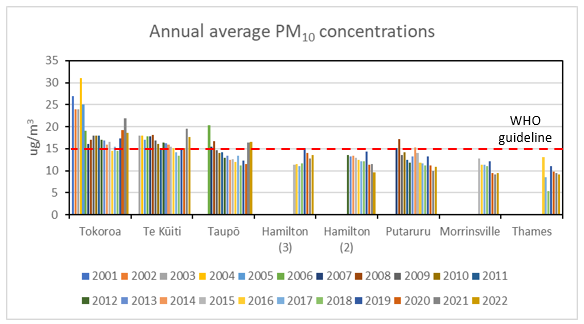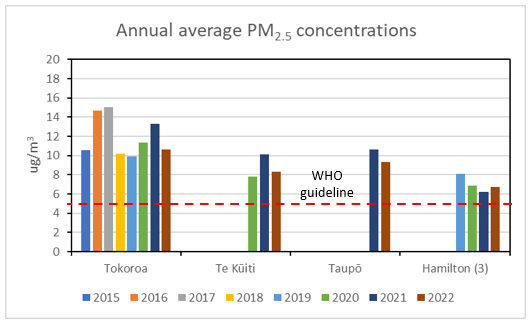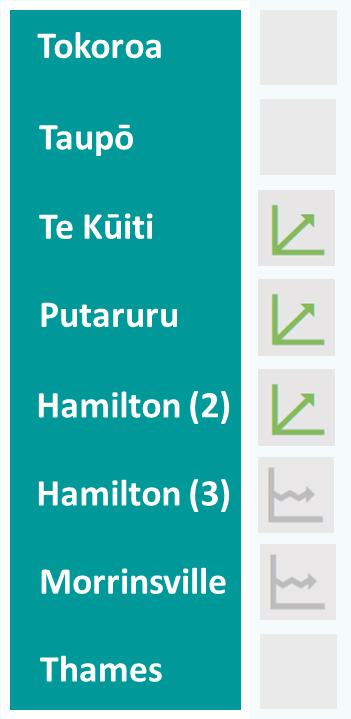Particle levels in air
Why we monitor particle levels in air
Although air pollution is a complex mixture of contaminants and particles generated from both natural and human created sources, the main air quality indicator of focus for monitoring and management in New Zealand has been PM10 (particulate matter less than 10 micrometres in size). However, while PM10 levels pose a risk to human health, it is now well established that the finer particle range, referred to as PM2.5 (particulate matter less than 2.5 micrometres in size) provides better evidence of effects on human health and is more indicative of the problem source, which is combustion related.
Waikato Regional Council measures the amount of PM10 and PM2.5 in the air. These particles are very fine and can remain suspended in the atmosphere for long periods of time.
Health effects associated with exposure to particles range from increased coughs and respiratory complaints to cardiovascular diseases, asthma, bronchitis, premature mortality and lung cancer. Susceptible people include the young and elderly and those with pre-existing medical conditions.
Results - data and trends
In our region, PM10 and PM2.5 levels are generally good or acceptable for much of the year. However, during cold, still days over winter when pollutants can become trapped close to the ground as a result of inversion layers, concentrations can approach or exceed the National Environmental Standard, Regional guidelines and World Health Organisation guidelines.
During winter, the majority of PM10 and PM2.5 in the region's urban areas comes from home fires, mainly from burning wood. Other sources such as industry and emissions from motor vehicles can also contribute to air pollution.
The Excel data file below contains the source data for this indicator's information.
Methods - how we monitor
More information
When this indicator is updated
This indicator is updated every year.
Last updated June 2023








To ask for help or report a problem, contact us
Tell us how we can improve the information on this page. (optional)